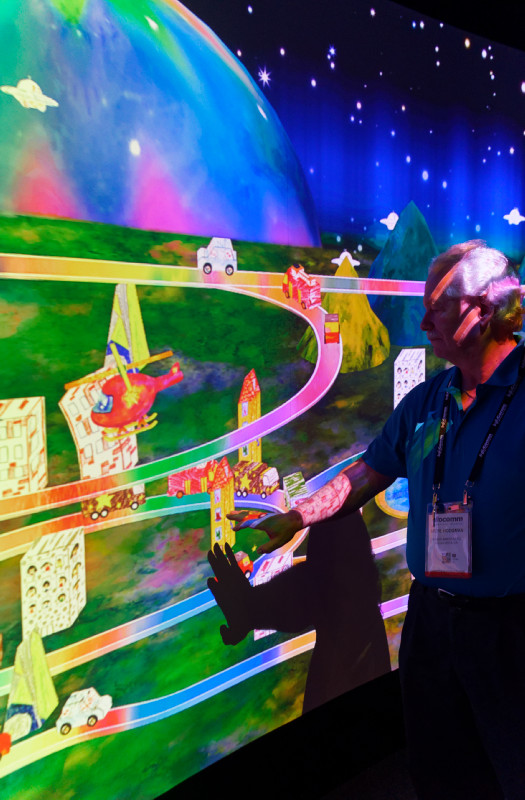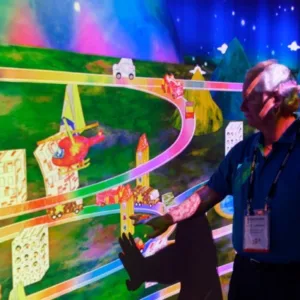Hitachi was, to some extent, ‘bowing to the inevitable’ by starting our booth tour with its interactive flat panel range. There are 65″ (FullHD – 10 touch), 75″ (UltraHD – 20 touch) and 86″ (UltraHD – 10 touch) versions. The smaller has one rear HDMI (and one through OPS), while the the 75″ has three and the 86″ two, also with OPS. They also have a front HDMI connector. The 75″ includes a software package integrated and does not need a PC for operation.
We then looked at the LP-WU9750B, an 8,000 lumen one chip DLP-based 1920 x 1200 L/P projector that has HDBaseT. It was being shown with a landscape/portrait converter which works on top of a regular lens. This was in a retail-style application where the unit was being used in a rear-projection configuration and exploiting the UST lens used, the projector was offset from the display screen.
There was a prototype 500 lumen UST system, the SP1, that is designed into a light fitting. The system is designed to be simply mounted on a wall and used with an integrated infrared curtain for touch use. It has 1280 x 800 resolution and is based on a single chip DLP engine.
 This Hitachi prototype uses a 500 lumen projector and an infrared curtain touch system. Image:Meko
This Hitachi prototype uses a 500 lumen projector and an infrared curtain touch system. Image:Meko
There were four new L/P projectors, all with 1920 x 1200 resolution and based on 1 chip DLP technology. There are units with 10,000 lumens (LP-WU9100B), 7,000 lumens (LP-WU6700-SD63), 6,000 (LP-WU6600-SD63) and 5,000 (LP-WU6500). Contrast of all of them is 20,000:1 and the first three have detachable lenses. The 5,000 lumen unit has a 1.15 to 1.9:1 zoom lens and the 7,000 and 6,000 lumen versions are shipped with the SD63 lens. All have HDBaseT support.
On the Hitachi booth was a demonstration by TeamLab of an interactive projection system that uses 3D sensors to allow users to interact with content. A similar system has been installed in San Francisco in a museum in a 360 degree configuration using nine or ten projectors. The system is apparently very popular.


